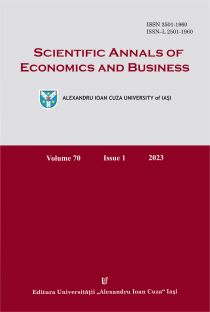Modelling the Non-Linear Dependencies between Government Expenditures and Shadow Economy Using Data-Driven Approaches
Modelling the Non-Linear Dependencies between Government Expenditures and Shadow Economy Using Data-Driven Approaches
Author(s): Codruț-Florin Ivașcu, Sorina Emanuela ȘtefoniSubject(s): Government/Political systems, Methodology and research technology, Economic development, Public Finances, Fiscal Politics / Budgeting
Published by: Editura Universităţii »Alexandru Ioan Cuza« din Iaşi
Keywords: machine learning; shadow economy; government spending;
Summary/Abstract: This article aims to model the relationship between the size of the shadow economy and the most important government expenditures respectively social protection, health, and education, using nonlinear approaches. We applied four different Machine Learning models, namely Support Vector Regression, Neural Networks, Random Forest, and XGBoost on a cross-sectional dataset of 28 EU states between 1995 and 2020. Our goal is to calibrate an algorithm that can explain the variance of shadow economy size better than a linear model. Moreover, the most performant model has been used to predict the shadow economy size for over 30,000 simulated combinations of expenses in order to outline some possible inflection points after which government expenditures become counterproductive. Our findings suggest that ML algorithms outperform linear regression in terms of R-squared and root mean squared error and that social protection spending is the most important determinant of shadow economy size. Further to our analysis for the 28 EU states, between 1995 and 2020, the results suggest that the lowest size of shadow economy occurs when social protection expenses are greater than 20% of GDP, health expenses are greater than 6% of GDP, and education expenses range between 6% and 8% of GDP. To the best of the authors' knowledge, this is the first paper that used ML to model shadow economy and its determinants (i.e., government expenditures). We propose an easy-to-replicate methodology that can be developed in future research.
Journal: Scientific Annals of Economics and Business
- Issue Year: 70/2023
- Issue No: 1
- Page Range: 97-114
- Page Count: 18
- Language: English

